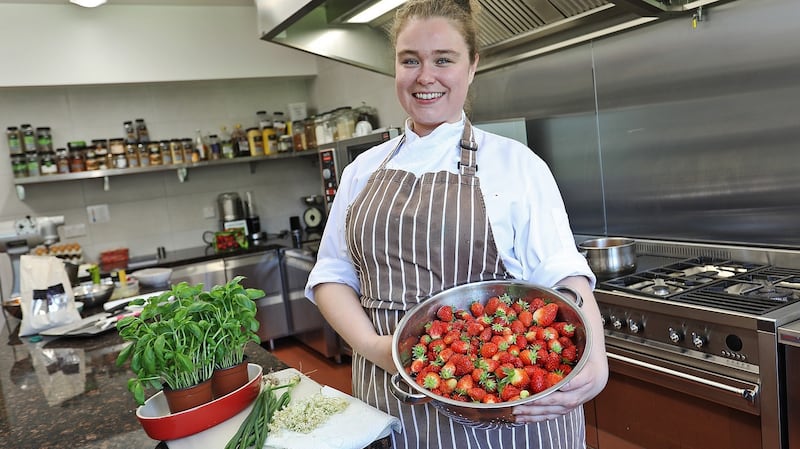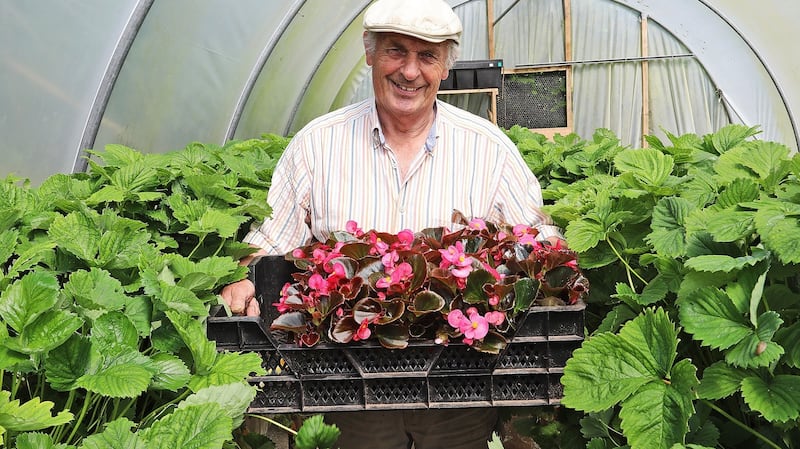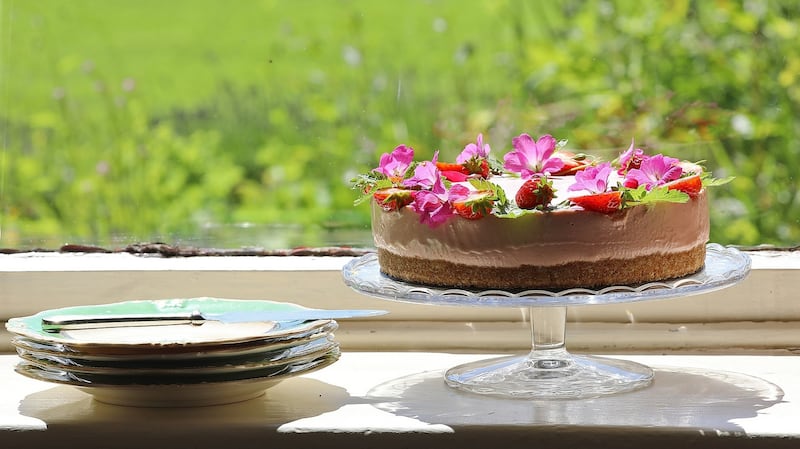Driving to the Tyrone Guthrie Centre, near Newbliss, on one of the hottest days of summer, I have slightly lost my way among the hazy, luscious drumlins of Co Monaghan and, probably helped along by the dreaminess of the town's name, have a feeling that I am slowly penetrating some quasi-magical kingdom.
At a crossroads, between high hedgerows, there's a young chap in the middle of the one-track road showing off his handsome pale roan hunter mare to neighbours. They set me right. " The Tyrone Guthrie Centre? Ah you mean Annaghmakerrig ? You're nearly there."
Sir William Tyrone Guthrie was a prolific theatre and opera director and producer in London, Stratford-upon-Avon, Canada and the US. Born in England in 1900, he was just too young to be drafted during the first World War, spent the second World War running the Old Vic Theatre and the Sadler’s Wells Opera and Ballet companies and founded the Guthrie Theater in Minneapolis and the Stratford, Ontario Shakespeare Festival.
He was a Tony Award winner, an honorary doctor of literature at the University of St Andrews, chancellor of Queen’s University Belfast and a man literally larger than life. Standing six foot six, with a booming voice, owl-like eyes and a long, hooked nose, it would be reductive to describe him merely as “charismatic” or “charming” or “magnetic”, although he certainly was all of those.

Guthrie’s ancestral home was Annaghmakerrig, Co Monaghan, his great grandfather the Irish actor, author, comedian and theatre director, Tyrone Power I (1797-1841), and his second cousin the Hollywood matinée idol, Tyrone Power (1914-1958).
Fellow theatre director Peter Hall wrote of Guthrie that, “Among the great originators in British theatre . . . Guthrie was a towering figure in every sense. He blazed a trail for the subsidised theatre of the ’60s. He showed how to run a company and administer a theatre and he was a brilliant and at times great director.”
But it was in his rapport with actors, playwrights and writers that Guthrie’s character shines through and lives on in his home at Annaghmakerrig, now the centre that bears his name. Actor William Shatner described how Laurence Olivier “worshipped and respected” Guthrie, even if he “trembled at his sight”. He was a master at crowds, at the grand design, more than words or lines, says Shatner of his direction, giving actors like him “freedom and confidence”.
“I never thought of failure after being directed by Guthrie.”
Canadian actor Christopher Plummer made his debut at Guthrie’s Stratford, Ontario Shakespeare Festival in 1956 under his direction. “He was a magical man. An audience of a thousand people, in that he sat and laughed and cried and encouraged you to be as inventive as you knew how, and at the same time showed you his appreciation.”
It was in this unique setting and ambience that Guthrie hosted and nurtured many writers and artists, in his challenging, ultra-interested, at times bordering on unsettling, way
Annaghmakerrig, the beautiful “Big House” sitting solidly among pasture and woodlands, overlooking lakes and islands, became at once a haven and a pre-rehearsal base for Guthrie’s companies and entourage. It was in this unique setting and ambience that Guthrie hosted and nurtured many writers and artists, always in his challenging, ultra-interested, at times bordering on unsettling, way.
Perhaps his most significant relationship, in terms of contemporary Irish culture, was with Donegal dramatist Brian Friel. Guthrie brought the young Friel, his wife and children to his theatre in Minneapolis for six months so that Friel could see first hand how plays were staged.
Upon his return, Friel completed his groundbreaking play Philadelphia Here I Come at Annaghmakerrig. It opened in Dublin before spending six months on Broadway and established Friel as a major playwright.
And it was Friel who, in 1981, 10 years after Guthrie had died, aged 70 in his beloved home, reopened the house as a residential workplace for artists of all disciplines. Fast forward to 2019, some 40 years of significant, visionary, cross-Border co-operation by both arts councils, and it is now obvious that the Tyrone Guthrie Centre has contributed to most of Ireland's current cultural ecology.
Ex-residents include Rosita Boland, Louise O’Neill, Liz Nugent, Dorothy Cross, Colm Tóibín, Anne Enright, Hugo Hamilton, Deirdre Purcell, Dermot Boger, Paul Durcan, Paul Muldoon, Theo Dorcan, Anne Devlin, Sebastian Barry, Mary Lavin, Dermot Healy, Eugene McCabe, Jim Sheridan, Joseph O’Connor, and countless others.
In an ultimate act of generosity, Guthrie had bequeathed the house and its contents to the Irish State “to be used for the purpose of providing a retreat for artists and other like persons . . . so as to enable them to do or facilitate them in doing creative work”.
The only stipulation that Guthrie made concerning residents was that they would sit together for dinner every evening. And dinner, unsurprisingly, is what brings me back to my own visit.
News of the excellent cooking at Annaghmakerrig had made its way to me via recently appointed board member, and head of art for National Museums Northern Ireland, Kim Mawhinney. I was intrigued to learn more about how such an already artistically nourishing place also fed its residents’ bodies and souls – with food.
After I’d found the estate at last, been greeted by manager Ingrid Adams and shown to my magnificent room – Guthrie’s study, with a satisfyingly creaky wooden floor and vintage sofa – I sat at the desk in the soft leather chair by the bow window overlooking the lawns and, for a while, dreamily imagined myself abandoning recipes and writing The Novel.
Wandering around the peaceful old house, shyly pushing open the heavy doors of the gorgeous library and drawing room, full of rare books and paintings and sculptures by ex-residents, I wondered how it was possible not to find inspiration here. I nosied a little more among the impressive rows of poetry works in the poetry corner just outside my bedroom door, until it was time for dinner.
In contrast to the grander ground floor, the huge dining table sits in the light and airy lower level, next to the communal and professional kitchens, and open on both sides to the garden.


As the artists and some board members (including board chairman, prominent radio and TV producer Adrian Moynes with his wife, artist Ruth McDonnell) started to flow in, chatting animatedly, I sat down with the centre director, Robbie McDonald.
McDonald, in the tradition of the centre’s much-loved first director, Bernard Loughlin, ensures not only the smooth running of the estate and house, but also that the artists’ work gets done.
“ No pets, no kids, no partners” is the rule at Annaghmakerrig, says McDonald (I think about the sweet single bed in my large bedroom). “Though couples can stay together in one of the self-catering cottages if both are working on something we’ve accepted.”
McDonald explains that even if an artist is not well prepared before arriving, which is rare, the complete lack of outside, day-to-day worries or tasks means that a week at the centre is akin to two or three in their usual work environment.
As for the food, the standards set by Bernard Loughlin’s wife, Mary, are fiercely kept up today by young chef Antoinette Ceelan, her team and the kitchen gardeners, Jim and John.
The table is beautifully set, and soon a dozen platters of sweet potato and chickpea tajine, tzatziki, couscous, and various colourful sauces and salads are being passed around as the chatter grows. It feels much more like noisy dinner parties I’ve known in Paris than teatime in Co Monaghan.
I'm left thinking that Tyrone Guthrie must be smiling down on us, happy that his last wishes have indeed been respected
Not only because the food is so good, but especially as the artists are from all over the world and, from time to time, some Italian or a Spanish or US accent drifts above more familiar tones.
Afterwards, when the strawberry and elderflower (both from the garden) cheesecake has all disappeared and coffees and conversations are taken outside into the balmy evening, I’m left thinking that Tyrone Guthrie must be smiling down on us, happy that his last wishes have indeed been respected.
The next morning, the atmosphere has radically changed. The big table is left empty, and in the communal kitchen, artists are quickly and quietly preparing their own breakfasts, taken quickly in twos or threes, at a smaller table. There’s a studious urgency in the air. It’s time to get down to work and almost everyone is already deep in thought.

From the professional kitchen next door, more food is brought to fill the fridge for lunch and throughout the day. The artists can come in at any time and find something home made, delicious and nutritious if they are in need of comfort, sustenance or simply distraction.
“It’s like a fairy comes and fills the fridge,” says Italian poet Elisa Biagini, as I eye the traybakes which have just appeared. “I’ve been on many retreats around the world, and nowhere else is the food this good.”
The guardian of appetites in Annaghmakerrig is local chef Antoinette Ceelan, 29, who was born in Crete, grew up “eating fresh fish and jars of honey” in her mother and godmother’s restaurant there, and did her most significant kitchen training at Lough Erne Resort in Enniskillen.
She tells me she still cannot believe her luck at stumbling upon the “piece of heaven” that is her current position. It’s heavenly for Ceelan, not only because of the large, bright, state-of-the-art kitchen, with its high ceilings and huge windows looking across the gardens, but because she adores the common experience and sense of community Annaghmakerrig meals allow.
“The big difference with a restaurant of course is that there, people choose what they want to eat. And at Lough Erne, it was all about fine dining. Here, I’m cooking more for health and this type of food is beautiful in that it’s a family meal. When I first walked in and saw the big table, I thought that’s it, that’s me.”
I find it creative, not restrictive. And you know, I'm not really a recipe girl. I have a recipe and then I go off
Aside from the herbs, fruit and vegetables grown on the grounds, everything is ordered from Newbliss craft butchers, Larimers, at least three times a week. Ceelan makes up a basic plan for the week, but with artists arriving every day, she must cater to an ever-changing array of dietary requirements. Far from daunted, she loves the challenge.
“I find it creative, not restrictive. And you know, I’m not really a recipe girl. I have a recipe and then I go off. They’re really just guidelines for me and I don’t really have any signature dishes. I’ve always gone with my style, with what the garden gives me, and at the moment I love raw food. I’d love to write my own book one day.”

Ceelan cuts me a slice of the raw carrot cake recipe she’s been developing. It is amazingly good, but she’s not giving away the recipe until it is “perfect”. It looks a lot like Guthrie’s legacy of creativity, generosity and inspiration has found its way not only into the rooms, studios and cottages at Annaghmakerrig, but into the kitchens, too.
SWEET POTATO, HALLOUMI AND CHICKPEA TAGINE
Serves 6
Ingredients
For tagine:
1kg sweet potato
300g Halloumi
400g canned chickpeas, drained and rinsed
100ml extra virgin olive oil
2 onions
3 cloves of garlic
2tsp smoked paprika
2tsp ground cumin
2tsp ground coriander
½tsp ground ginger
½tsp ground cinnamon
½tsp mixed spice
400g chopped tomatoes
2tbsp tomato puree
2 red chillies
1 bag baby spinach leaves
2tsp honey
50g dates, roughly chopped
50g dried apricots, roughly chopped
100g flaked almonds
Salt and pepper
Fresh coriander, to garnish
Natural yogurt, to serve
For couscous:
250g couscous
Extra virgin olive oil
Bunch of spring onions
Zest of 2 lemons
1 pomegranate
Preserved stem ginger, optional
Method
1 Peel and chop sweet potato into cubes and set aside.
2 Peel and finely chop onions. Heat oil in a large saucepan over medium heat. Add onion and one teaspoon of salt and cook, stirring occasionally, for six minutes or until soft.
3 Crush garlic into pan, cooking for a further minute. Add spices and finely chopped chilli and cook, stirring continuously, for a further 30 seconds or until fragrant.
4 Add tomatoes and paste, then stir in sweet potato, chickpeas, honey and 375ml water (more if needed). Simmer for 20 minutes or until vegetables are tender and sauce is slightly thickened.
5 Meanwhile, cut halluomi into cubes. In a hot pan, fry the halloumi until golden. Add to the tagine, along with dates and apricots.
6 To make couscous, place couscous in a bowl with 1½ tablespoons olive oil and half a teaspoon of salt. Using your fingertips, rub oil into couscous to coat grains. Add lemon zest and pour over 250ml boiling water and stir well to combine. Cover with cling film and set aside for 10 minutes, or until the water is absorbed.
7 Meanwhile, finely chop the spring onion and preserved ginger. Remove seeds from the pomegranate. Once ready, add to the couscous and mix well.
8 To finish the tagine, add baby spinach and mix through, allowing it to wilt. Season and garnish with flaked almonds and fresh coriander. Serve with natural yoghurt.
STRAWBERRY AND ELDERFLOWER CHEESECAKE
Serves 6-8
Ingredients
For the base:
125g shortbread biscuits
125g digestive biscuits
50g desiccated coconut
100g butter, melted
For the filling:
225g cream cheese
140g icing sugar
300ml double cream, semi-whipped
300g strawberry puree
50ml elderflower cordial
3 gelatine leaves
50ml cream
Method
1 Line the bottom of a 10/12 inch round spring-form cake tin with parchment paper.
2 For the base, blend the shortbread and digestive biscuits in a food processor until ground to a fine crumb. Pour crumbs into a bowl and add coconut and melted butter. Mix together until all the crumbs are coated.
3 Spoon this mixture into the prepared tin, pressing down firmly until evenly spread. Place in the fridge to set, about 20 minutes.
4 Meanwhile, beat the cream cheese and icing sugar in a food processor until smooth. Add strawberry puree and elderflower cordial, mix until smooth.
5 Soak the gelatine for 30 minutes in cold water. Heat the cream. Add the gelatine to cream and mix well into the cream cheese mixture.
6 By hand, gently fold in the pre-prepared semi-whipped cream into the mixture. Pour the mixture over the prepared base and smooth the top with a spatula. Place in the fridge to set for three to four hours or overnight.
7 To de-mould, run a sharp flat knife around the sides of the cheesecake, then unclip and remove the outer ring of the cake tin. Gently work a spatula or palette knife underneath the base and then slide the cheesecake onto a serving plate. Decorate with fresh strawberries.












